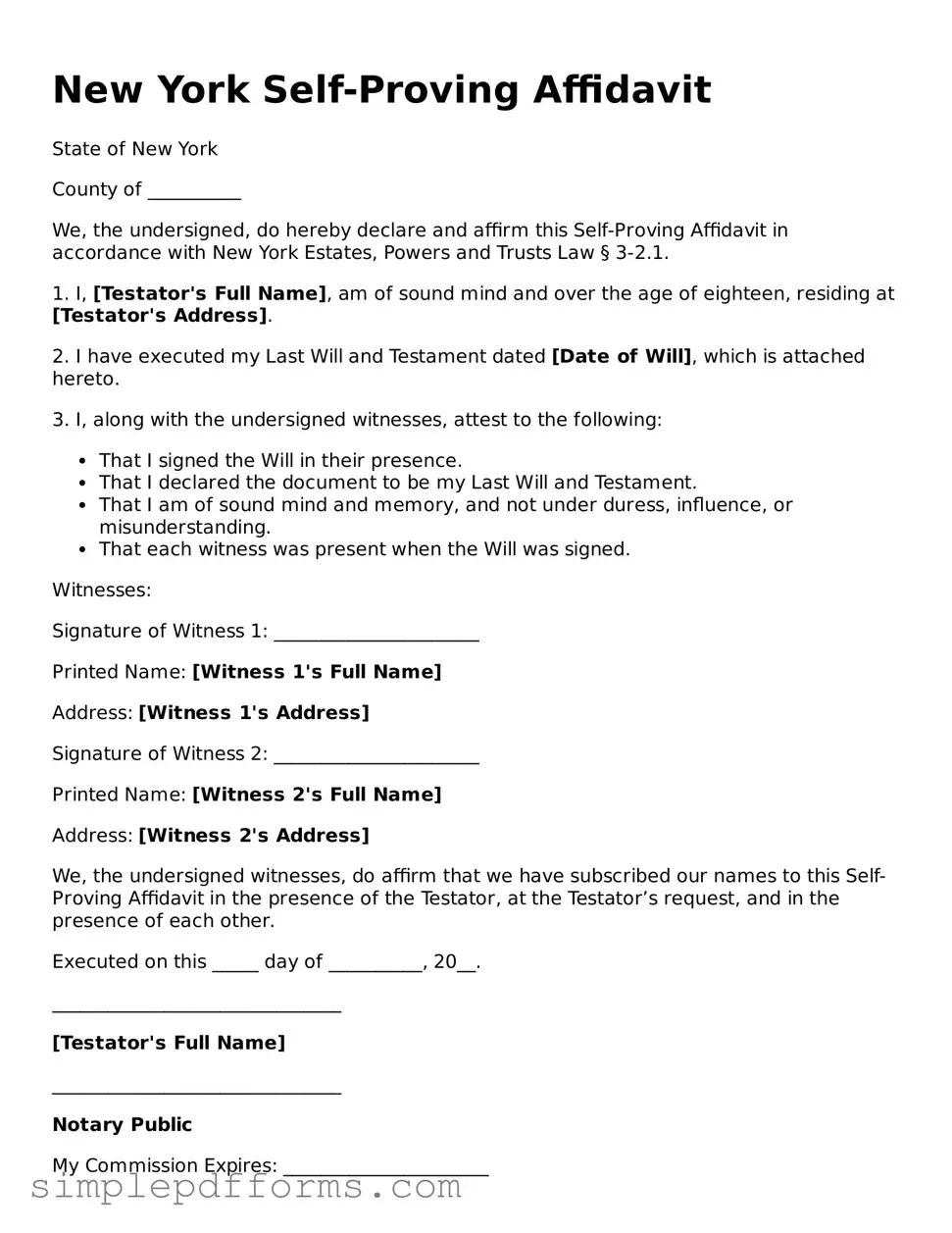New York Self-Proving Affidavit
State of New York
County of __________
We, the undersigned, do hereby declare and affirm this Self-Proving Affidavit in accordance with New York Estates, Powers and Trusts Law § 3-2.1.
1. I, [Testator's Full Name], am of sound mind and over the age of eighteen, residing at [Testator's Address].
2. I have executed my Last Will and Testament dated [Date of Will], which is attached hereto.
3. I, along with the undersigned witnesses, attest to the following:
- That I signed the Will in their presence.
- That I declared the document to be my Last Will and Testament.
- That I am of sound mind and memory, and not under duress, influence, or misunderstanding.
- That each witness was present when the Will was signed.
Witnesses:
Signature of Witness 1: ______________________
Printed Name: [Witness 1's Full Name]
Address: [Witness 1's Address]
Signature of Witness 2: ______________________
Printed Name: [Witness 2's Full Name]
Address: [Witness 2's Address]
We, the undersigned witnesses, do affirm that we have subscribed our names to this Self-Proving Affidavit in the presence of the Testator, at the Testator’s request, and in the presence of each other.
Executed on this _____ day of __________, 20__.
_______________________________
[Testator's Full Name]
_______________________________
Notary Public
My Commission Expires: ______________________
